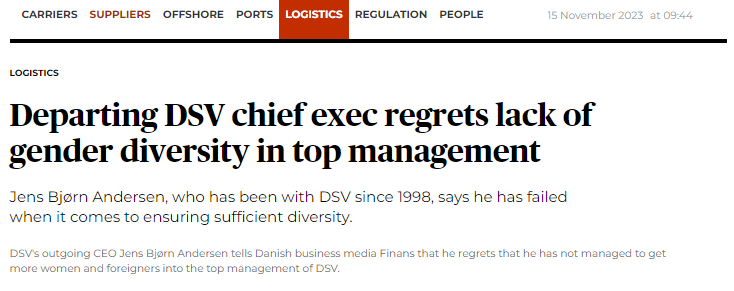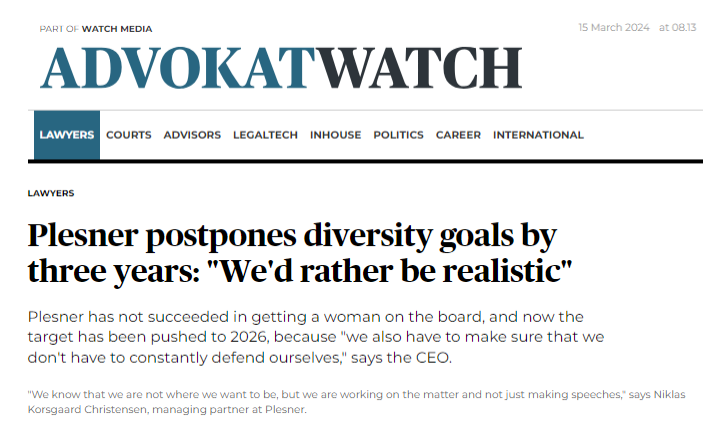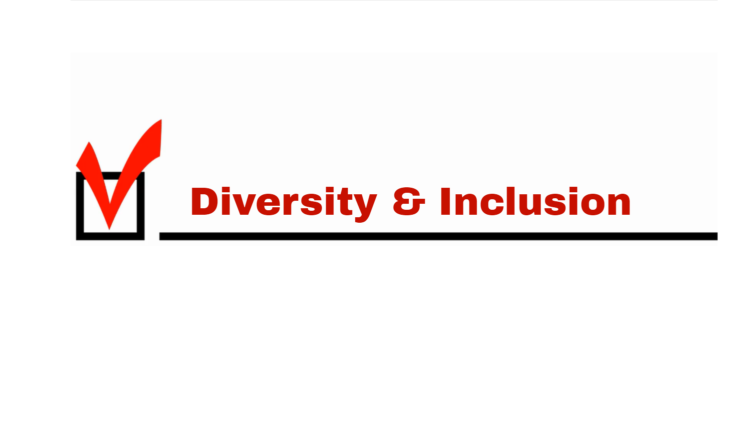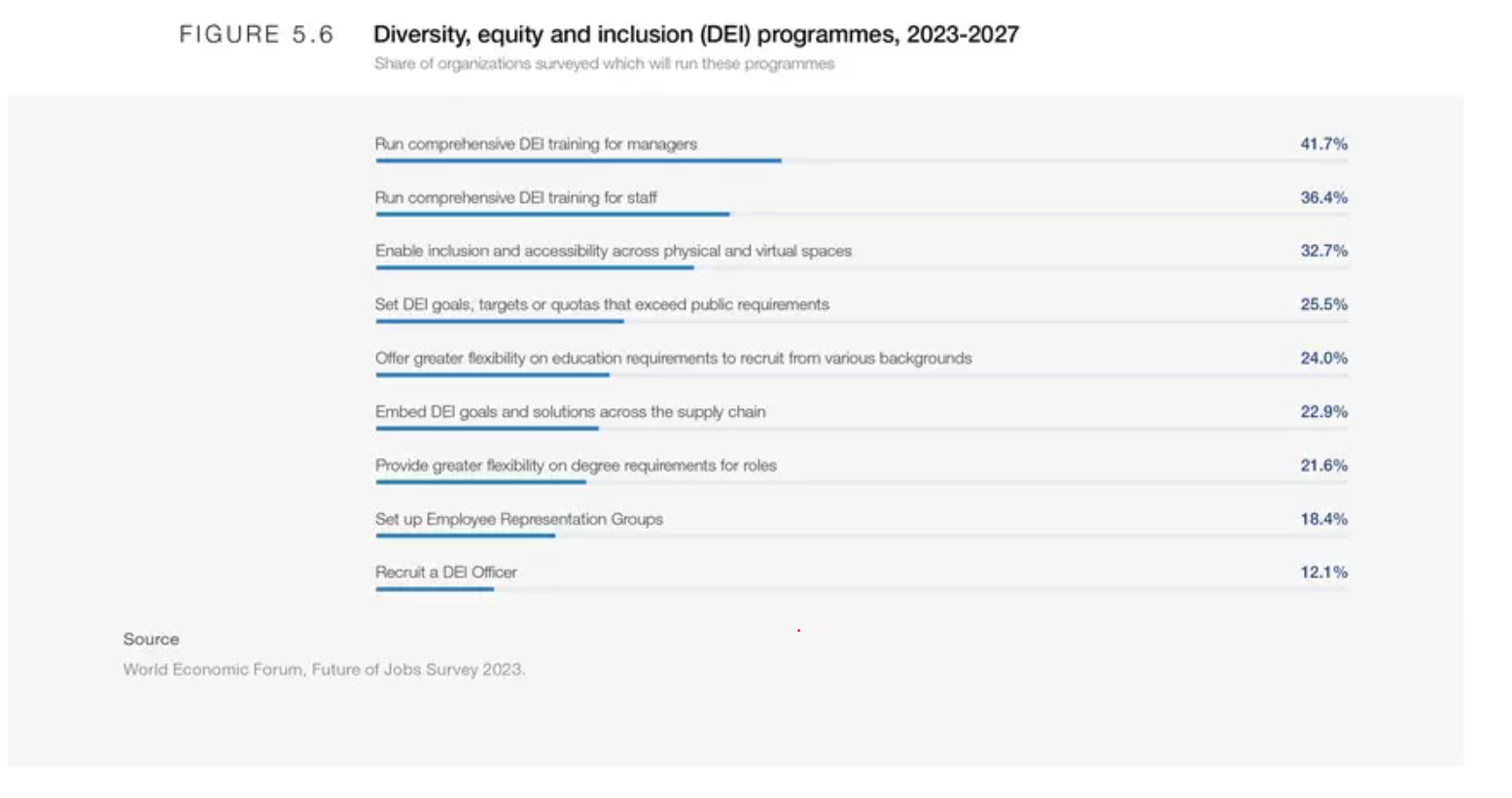Far too many European companies focus on hiring diverse talent as their main strategy for building a Diversity, Equity & Inclusion (DEI) program. The thinking seems logical – actively seeking and hiring candidates from underrepresented groups will quickly make the organization more diverse.
However, relying heavily on attracting talent with diverse experiences and backgrounds is a short-sighted approach to addressing DEI within a business. In fact, this oversight can actually stall your DEI efforts.
The Appeal of Hiring Diverse Talent Recruitment
The focus on diverse talent recruitment is understandable. CHROs show visible progress and measurable results – key drivers for any business function. By increasing the number of employees from diverse backgrounds (mainly gender and nationality), European companies proudly showcase their commitment to diversity with ad-hoc, tick the DEI box initiatives.
Beware Of The Traps
While hiring diverse talent is important, focusing primarily on this approach to build DEI is problematic.
Chasing Quick Hires Over Sustainable Growth
Corporate cultures are hyper-focused on demonstrating short-term results.
Intense performance pressure and frequent reporting cycles keep staff in the “short game mindset”.
It’s counterproductive to the recruitment of new employees. Their onboarding & ramp-up times far exceed the quarterly milestones for the department’s performance. Hiring managers recognize that their team won’t be fully productive for that time.
Adding change – via “new diversities” – brings more uncertainty for leaders who aim to reach their short-term goals.
The last thing on many hiring managers’ minds is how to bring more change to their team.

In addition, this short-term mindset can devastate D&I during economic downturns.
As markets contract, hiring freezes and downsizing become the priorities.
No new additional staff, and a loss of diversity with any layoff.
If an organization’s D&I strategy hinges on hiring diversity, then it is doomed from the start. Relying on a diverse staff count or the promise of diverse talent is a weak foundation from which to build sustainable D&I.
The Recruitment Runaround
Signs that your talent acquisition process is doing more harm than good with diverse candidates:
Overrepresenting diversity in your company
Using stock images of diverse people in job descriptions who do not reflect the current demographics of your company is misleading and cheesy. A quick scan of your company website and LinkedIn profiles of employees reveals who your company truly acknowledges.

Have questions about the job? That’s your problem.

The job description invites you to contact a specific person about the role, but it is virtually impossible to get a response to your mail or phone messages. The pre-ghosting behavior is widespread and demonstrates a lack of willingness to engage with the community you are trying to attract.
Missing channels for candidates to provide feedback to the recruitment
We are in societies that expect feedback.
You know you wait for that first after you post on social media.
Only minutes after we have finished our Uber ride or purchased an online product, we get the request to rate the experience.
Not being able to give feedback and suggestions to rigid processes is frustrating.
When applying for multiple jobs, the candidate experience will include:
– specific challenges submitting applications through the applicant tracking system (ATS),
– long response times or no responses to applications
Will the potential talent be willing to apply for your positions if they expect the same problems and lack of response?
Diversity Doesn’t Reach the Top

When I see diversity in an organization, I am quick to ask what roles the individuals have in the company.
More often than not, they are in a frontline, junior level or individual contributor role.
The higher up in the company you go, the fewer diverse employees you’ll find as peers.
This gap boils down to a couple of issues:
Tradition: the “work your way up” mindset.
Executive leaders today come from a generation of “pay your dues as a newbie, and work your way up”
Extensive management training programs and path-to-promotion models became an integral part of the employee lifecycle.
Unfortunately there are ingrained barriers to advancement for diverse talents. Thus, diversity disappears from the ranks.
Higher attrition rates have Chief People Officers and their team scrambling to fill empty roles.
They end up selecting from the same pools of talent for the next round of frontline and junior level staff.
Diversity increases at the bottom and decreases at the top.
Unconscious Biases While Hiring Diverse Talent
Although talent acquisition teams lead the way with inclusive hiring processes and inclusive language tools, the bottleneck often forms around the hiring managers’ selection process. Unconscious biases influence most decisions in workplaces.
Unconscious bias involves subtle associations, stereotypes, and attitudes towards something. These biases form through personal experiences, societal influences, and cultural norms, often operating outside of conscious awareness.
In conversations with general managers and managing directors, we consistently hear concerns about their hiring managers’ reluctance to bring new diversity into their teams.
The hiring managers’ perspective: the team’s performance, cohesion, or dynamics are all at stake.
These concerns are biases and greatly affect who gets the job. Longlisted diverse talent often won’t make it past the interview with the hiring manager. This undermines the organization’s DEI efforts. Overcoming such ingrained prejudices requires more than just an updated recruitment process. Leaders require awareness around DEI principles and HOW they benefit the hiring manager’s work and performance. 41.7% of companies surveyed by the World Economic Forum are running DEI training for managers.
The Trap of Tokenism When Hiring Diverse Talent
Meet the lonely only.
Hanne is the first woman in the firm to hold this position.
Silvano is the only neuro divergent person on our staff.
Ayana is the highest ranking person of color in our company.
Tokenism – making only superficial, symbolic efforts to include a few members of underrepresented groups.
The one and done diversity recruitment solution gives a false impression of inclusivity.
Without addressing deeper systemic issues, tokenism makes diverse employees feel like the “lonely only” – undervalued and used as a marketing tool.
Tokenism vs Talent
Hiring Diverse Talent Meets Resistance to Change

“Diverse recruitment has nothing to do with me. I’ll let HR handle it.”
This resistance, whether vocal opposition or passive foot-dragging, stems from psychological factors like fear of the unknown, clinging to familiar in-groups, and the temptation to maintain status quo. Overcoming such opposition requires much more than just diverse hiring; And it will be only a matter of time before leadership teams will stand accountable for the status quo. Not only does it demand awareness from the executive level it requires Acts Of Inclusion.
Get Back On Track
To overcome these pitfalls and work toward meaningful, sustainable diversity, equity, and inclusion, European companies must look beyond simplistic diverse recruitment as just a starting point.
Upskilling Hiring Managers
Since hiring managers tend to act as the ultimate gatekeepers and decision-makers regarding new hires, it’s crucial for companies to directly engage and educate this key group on inclusive hiring principles. Create tangible incentives that reward the team for demonstrating company values through inclusive behaviors.
Long-Term, Big Picture Strategy
The most effective European companies positioning themselves as DEI leaders have taken a long-term, multi-year approach that extends far beyond short-burst “diversity hiring” towards aligning with their values.
A roadmap has clear, measurable goals and accountability checkpoints across the business. Let it act as the undercurrent for your overall business strategy.
DEI is a continuous process – similar to marketing / branding- requiring dedicated resources and budgets.
Building Buy-In & Trust
Hiring diverse talent to the organization is one thing, leveraging the unique expereinces for innovation and growth is another.
D&I demand top-level action, because influence flows quickly from the top.
Executives demonstrating inclusive leadership inspires others to do the same.
Create trust from your diverse staff – chances are you don’t have it.
Actively encourage their unique viewpoints.
Turning diversity into an inclusive and prosperous business advantage happens only when both of the above exist.
Buy-in enables folks with influence to use their influence on behalf of others.
Trust empowers folks with unique views to share their pattern of experiences and perspectives.

Final Thoughts
Hiring diverse talent is an initial step towards a more diverse and inclusive company.It should not be the company’s DEI roadmap.
Building an inclusive and diverse organization demands an integrated, multi-faceted approach.
Implementing a DEI roadmap across business functions is key, and upskilling leaders to model inclusive behaviors is a first step in that process. This paves the way for companies to cultivate buy-in and trust from the staff, enabling the business to deliver sustainable competitive advantages.
Inclusive Matters: Turn your D&I efforts into measurable business results.
Like what you’ve read? Subscribe for more valuable content.




0 Comments